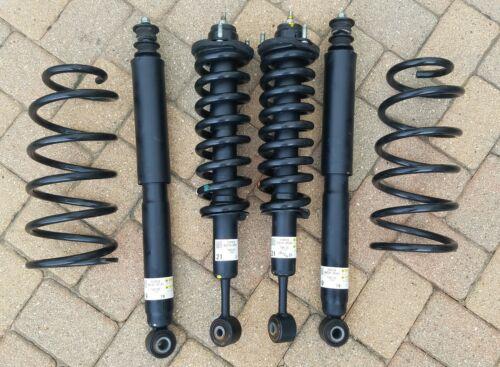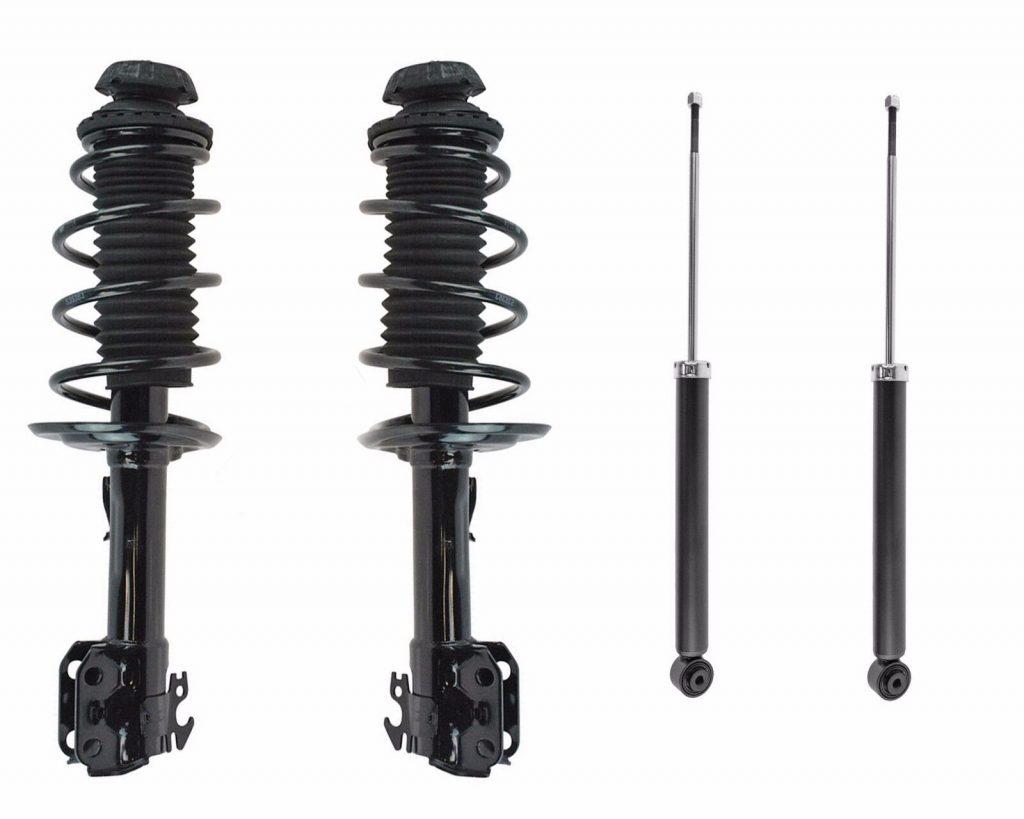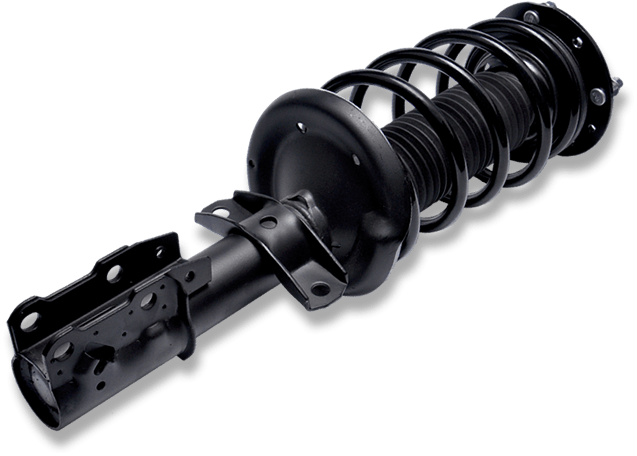Are Aftermarket Struts as Good as OEM?
By Sebastian Orellana
Updated Feb 18, 2024

Are aftermarket struts as reliable as those of original equipment manufacturers (OEMs)? Many car owners wonder if aftermarket struts, often cheaper than OEM struts, can provide the same level of performance and durability.
Table of Contents
This post will explore the advantages and disadvantages of aftermarket struts compared to OEM struts and provide tips on choosing the right strut for your car.
READ: How Long Can An Electric Car Idle On?
What are Aftermarket Struts?

Aftermarket struts are suspension components used in vehicles to reduce the amount of bounce, vibration, and shock when driving. In contrast to stock struts, aftermarket struts are designed to provide more excellent performance, comfort, and improved ride quality.
Aftermarket struts are typically heavier-duty than stock struts and are often adjustable, allowing drivers to customize the handling.
What are OEM Struts?

OEM struts, or Original Equipment Manufacturer struts, are a type of automotive suspension system used to reduce the impact of driving over rough roads and improve vehicle handling. They are made up of a shock absorber and a coil spring, and they are designed to absorb the shock of bumps and potholes and increase the vehicle’s stability, traction, and braking performance. OEM struts are typically found in cars, trucks, SUVs, and vans.
OEM struts are a critical component of a vehicle’s suspension system and serve several essential functions. They are responsible for controlling the vehicle’s ride height and providing the necessary dampening to keep the vehicle from bouncing and swaying when it encounters bumps or potholes. OEM struts also improve handling, stability, and braking performance.
Regarding replacing OEM struts, there are a few essential considerations to keep in mind. The first is the type of strut that is needed. OEM struts are explicitly designed for a specific vehicle make and model, so they may not fit other vehicles. It is essential to make sure that the correct strut is chosen, as the wrong strut can cause damage to the vehicle.
Another essential factor to consider when replacing OEM struts is the quality of the parts. OEM struts are made with the highest quality materials and are designed to last many years. It is essential to choose a quality part to ensure that the job is done right and that the vehicle’s performance is not compromised.
Finally, it is essential to consider the cost of OEM struts. OEM struts can be more expensive than aftermarket struts, but they are usually of higher quality and will last longer. For this reason, it is often worth investing in OEM struts, as they will provide the best performance and most extended life.
Types of OEM Struts
When choosing the right OEM struts, there are several different types. The most common OEM struts are twin-tube, monotube, and adjustable struts.
Twin-tube struts are the most common type of OEM struts. They are a two-piece design, with a double-walled cylinder inside a single-walled cylinder. Twin-tube struts are designed to provide a smooth ride and improved handling and reduce road noise.
Monotube struts are a one-piece design with a single-walled cylinder inside. Monotube struts are designed to provide a firmer ride and improved handling and reduce road noise.
Adjustable struts are a variation of the monotube strut and are designed to be adjustable. Adjustable struts allow the user to customize their ride and handling and reduce road noise.
Advantages of Aftermarket Struts
One of the main advantages of aftermarket struts is their cost. Aftermarket struts are often much cheaper than OEM struts, making them an excellent option for car owners looking to save money. Aftermarket struts also have an advantage in customization, as many aftermarket struts are designed to fit a wide range of vehicles.
This makes them an excellent option for car owners who want to upgrade their vehicle's suspension system without spending too much money.
Disadvantages of Aftermarket Struts
While aftermarket struts can be a good option for car owners looking to save money, they do have some drawbacks. Aftermarket struts are often made with lower-quality materials than OEM struts, which means that they may not be as durable or reliable as OEM struts. Additionally, aftermarket struts may not fit as well as OEM struts, which can cause problems with performance and handling.
Factors to Consider When Choosing Struts

When choosing between aftermarket and OEM struts, car owners should consider several factors, including cost, fit, and durability. Cost is essential, as aftermarket struts are often much cheaper than OEM struts.
However, car owners should also consider fit and durability, as aftermarket struts may not fit as well as OEM struts and may not be as durable.
READ: What Happens If An Electric Car Runs Out Of Power?
Safety and Reliability
When it comes to safety, OEM struts are usually the best option. OEM struts are designed to meet strict safety standards and are tested for reliability and performance. On the other hand, aftermarket struts are not always tested to the same standards and may not provide the same level of safety and reliability.
OEM and Aftermarket Warranties
When purchasing struts, car owners should also consider the warranty coverage offered by OEM and aftermarket manufacturers. OEM manufacturers often offer more extended warranties than aftermarket manufacturers, which can provide extra peace of mind for car owners.
Installation
When installing struts, car owners should also consider the installation process. OEM struts may require more specialized tools and experience than aftermarket struts, making installation more complicated. Aftermarket struts may be easier to install, but car owners should ensure that the struts are properly installed to provide the best performance.
Durability
Durability is another crucial factor when choosing between aftermarket and OEM struts. OEM struts are usually made with higher-quality materials than aftermarket struts, making them more likely to last longer. However, aftermarket struts may be a good option for car owners who don't plan on keeping their vehicles for a long time.
Compatibility
When choosing struts, car owners should also consider compatibility. OEM struts are usually designed to fit a specific make and model of vehicle, while aftermarket struts are designed to fit a wide range of cars. It is essential to ensure that the struts you purchase are compatible with your car and provide the best performance.
Performance

Another essential factor is performance when choosing between aftermarket and OEM struts. OEM struts are designed to meet the vehicle's manufacturer's specifications and usually provide the best performance. Aftermarket struts may not offer the same level of performance, but they can still be a good option for car owners looking to upgrade their vehicle's suspension system.
READ: Best Suspension Kits: A Comprehensive Guide
Conclusion
When deciding between aftermarket and OEM struts, car owners should consider several factors, including cost, fit, durability, safety, warranty coverage, installation, compatibility, and performance. OEM struts are usually the best option for car owners who want the highest performance, reliability, and safety. Still, aftermarket struts can be a good option for car owners looking to save money.
